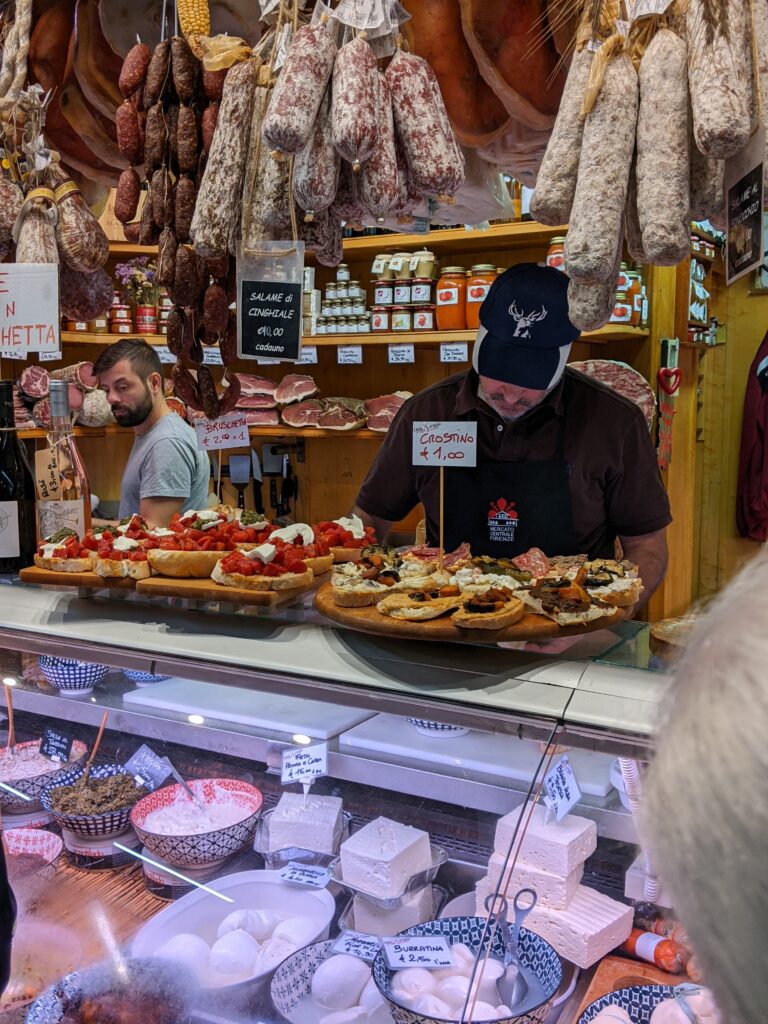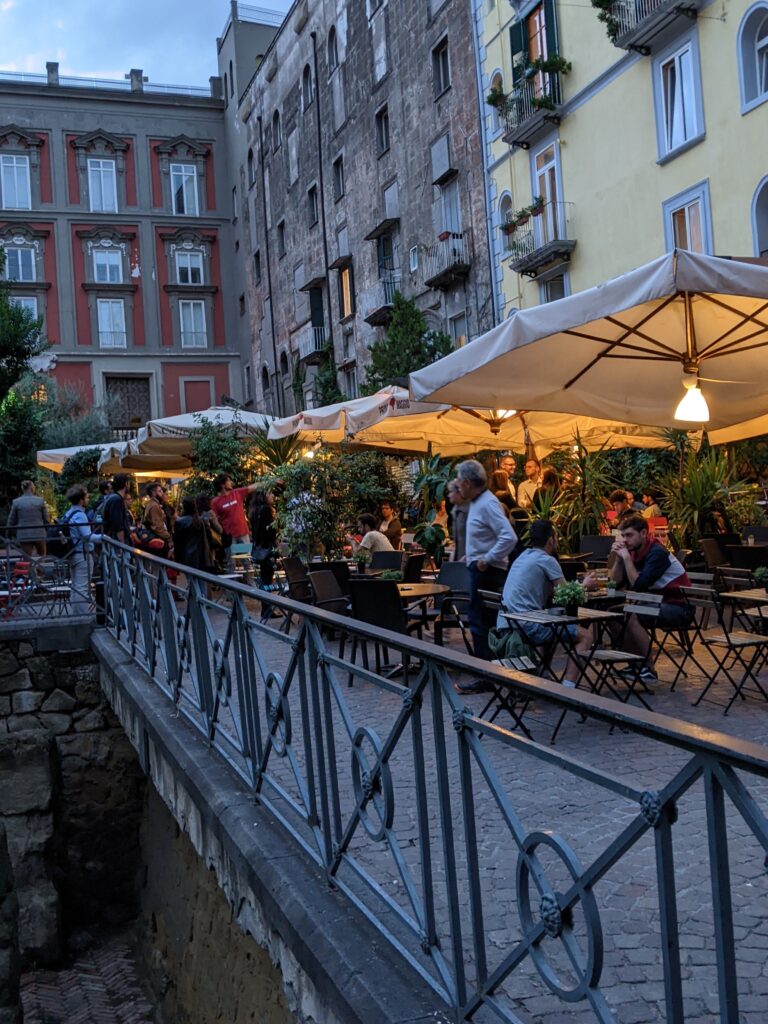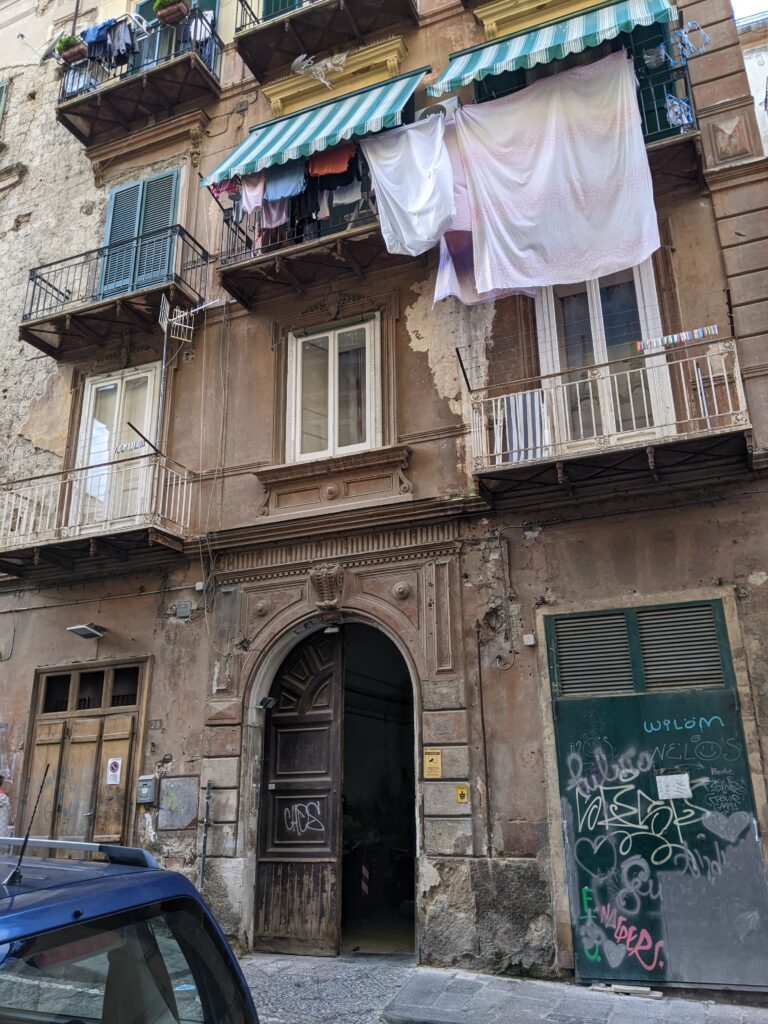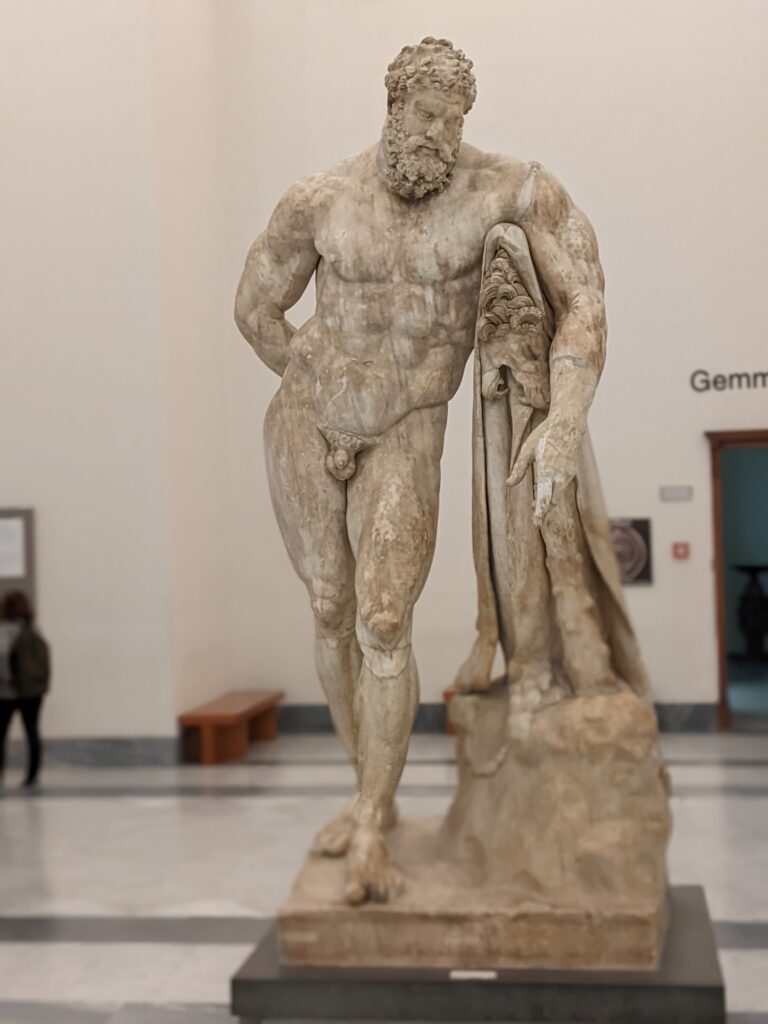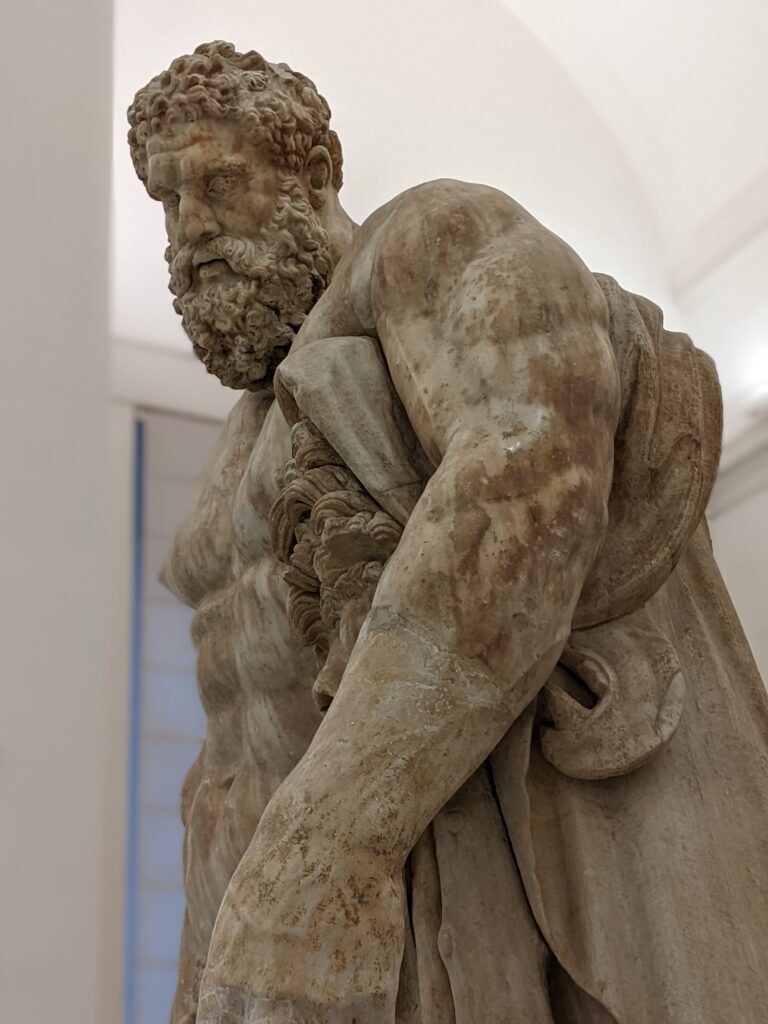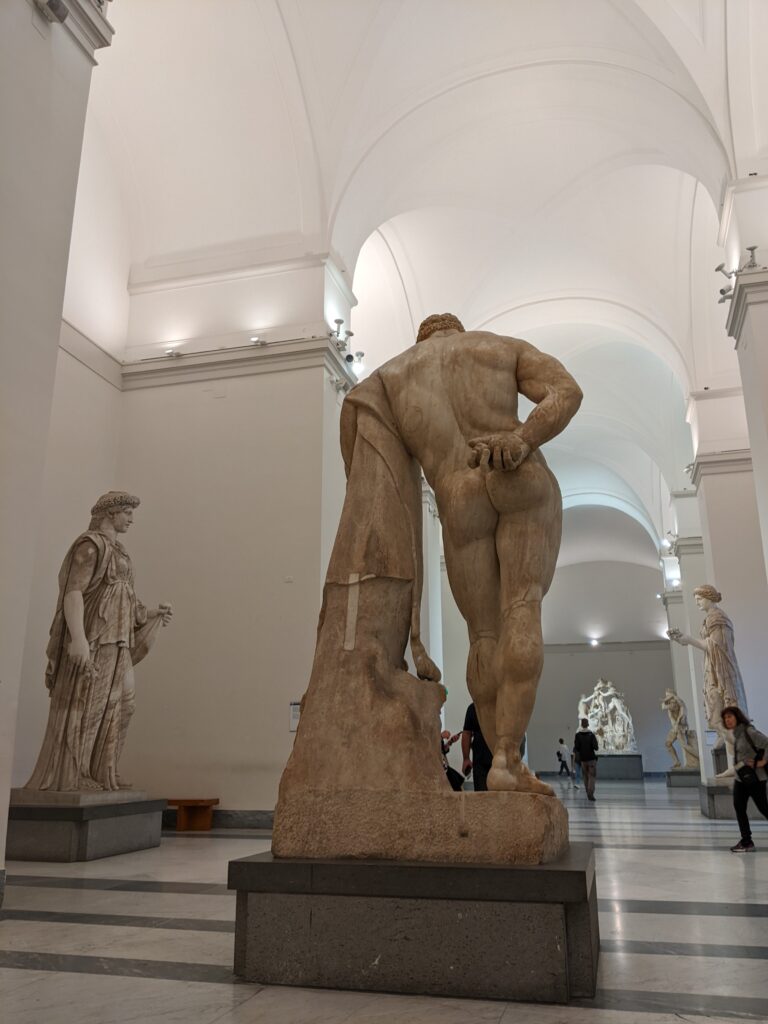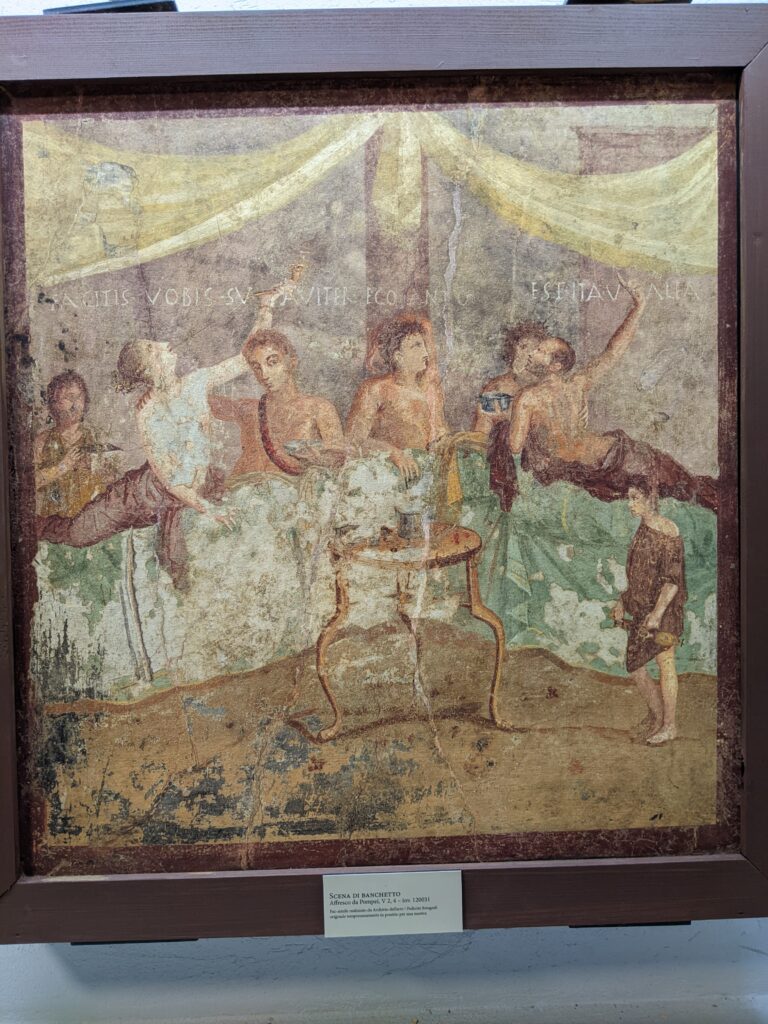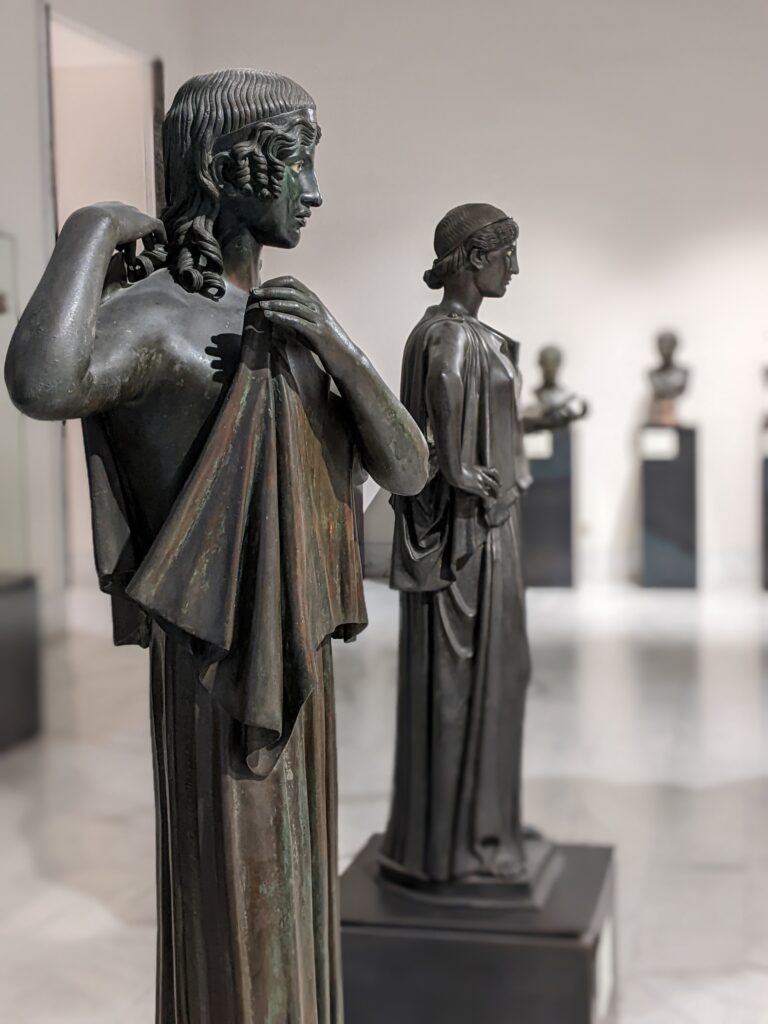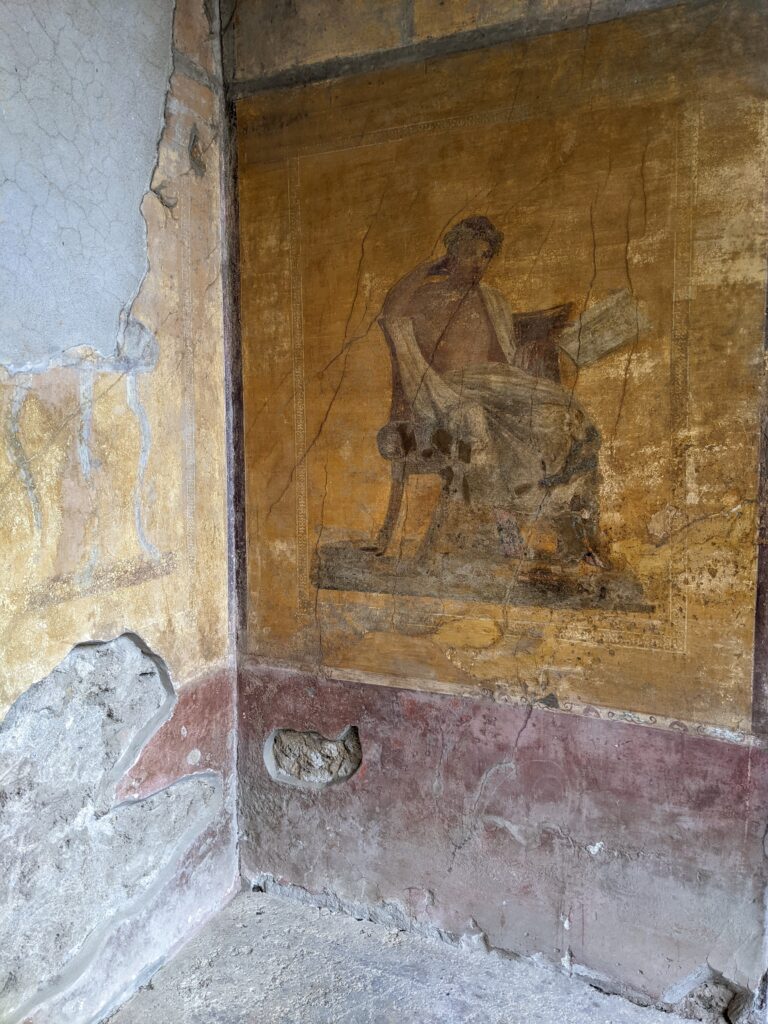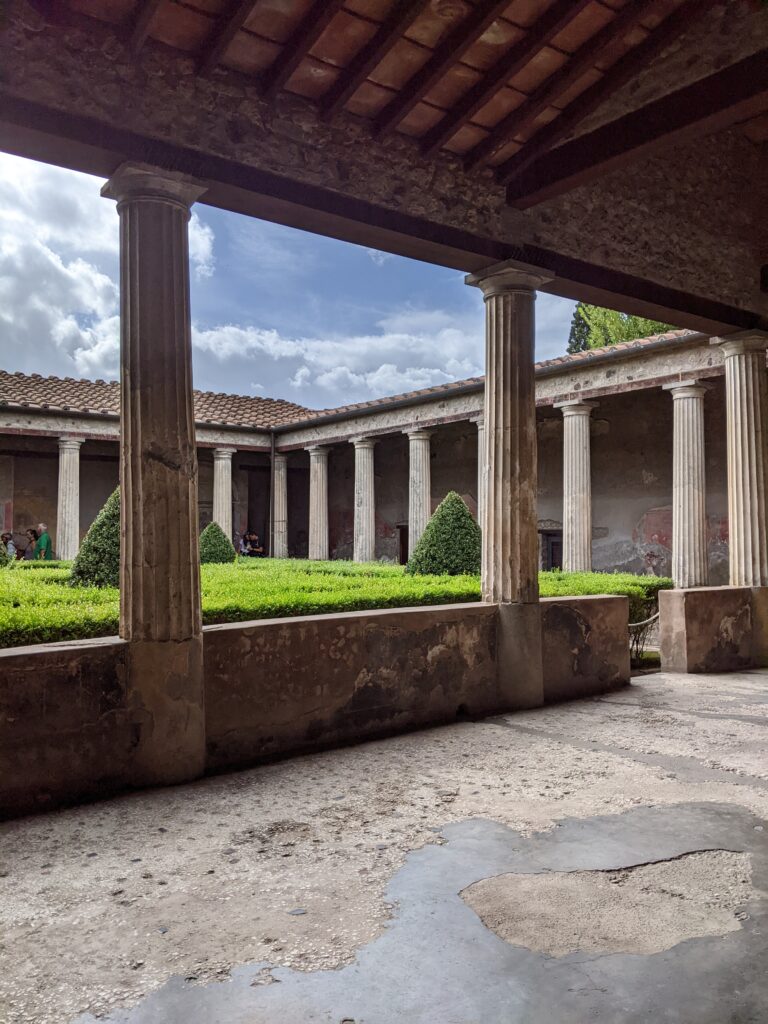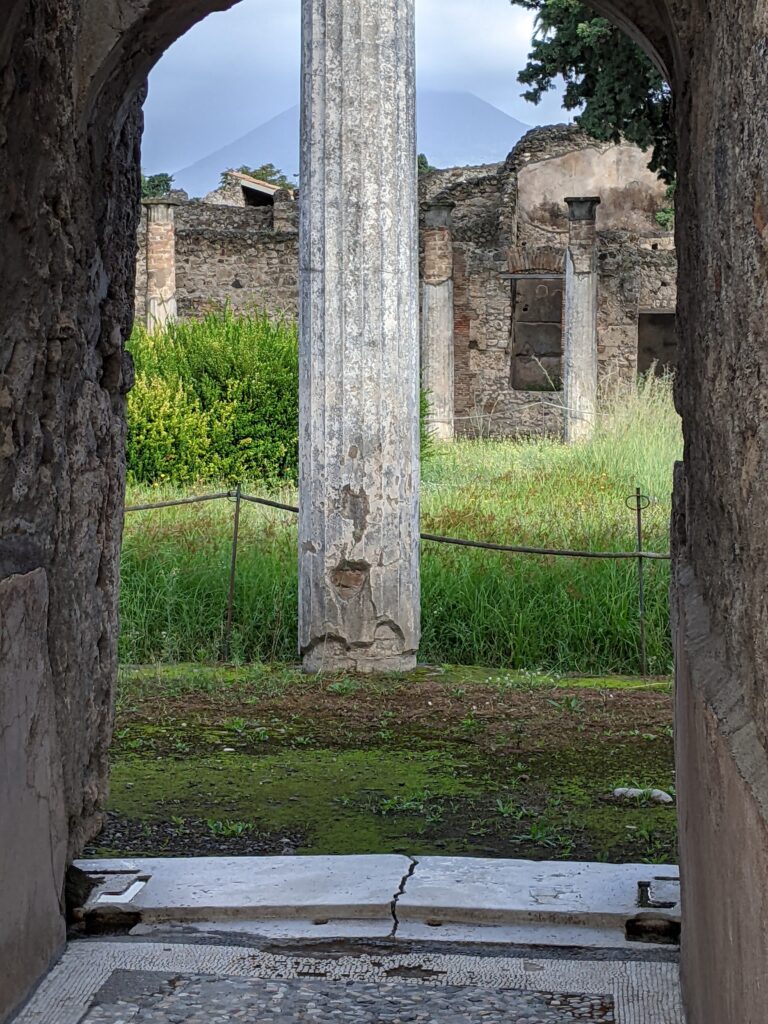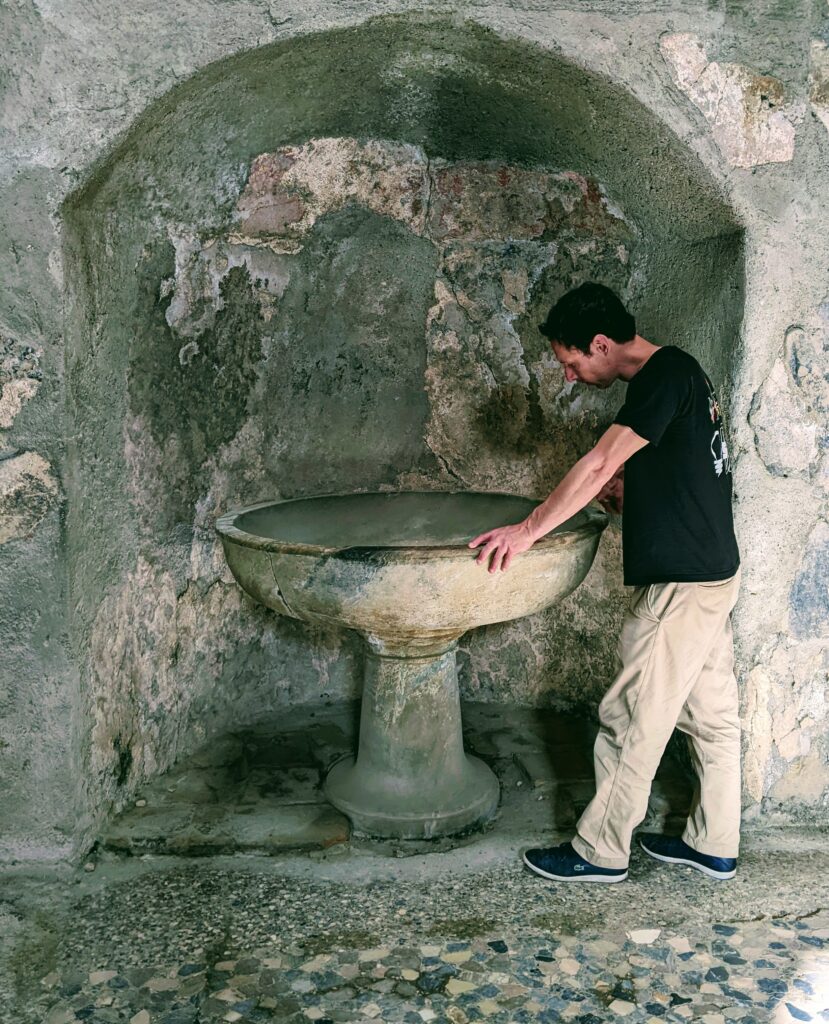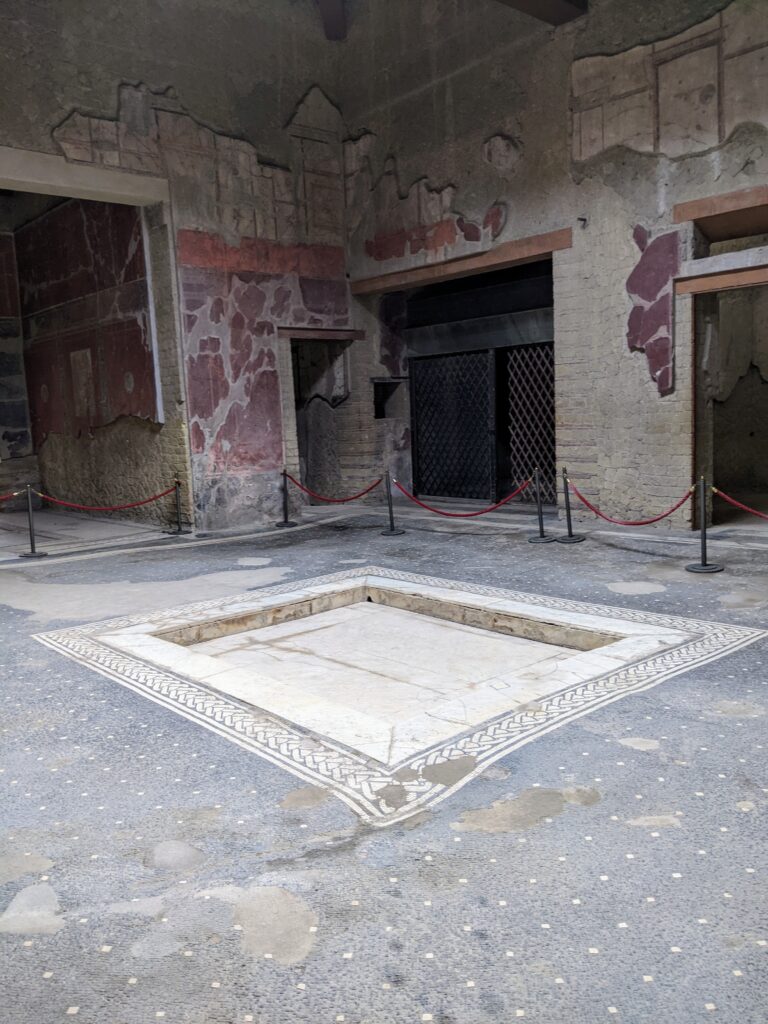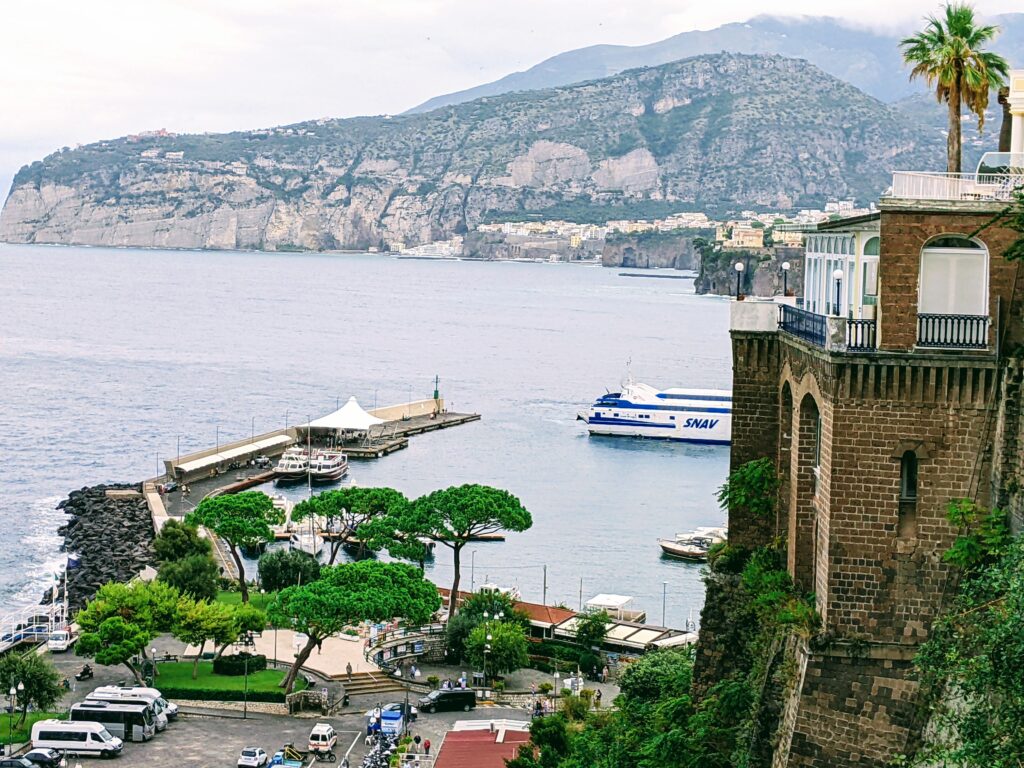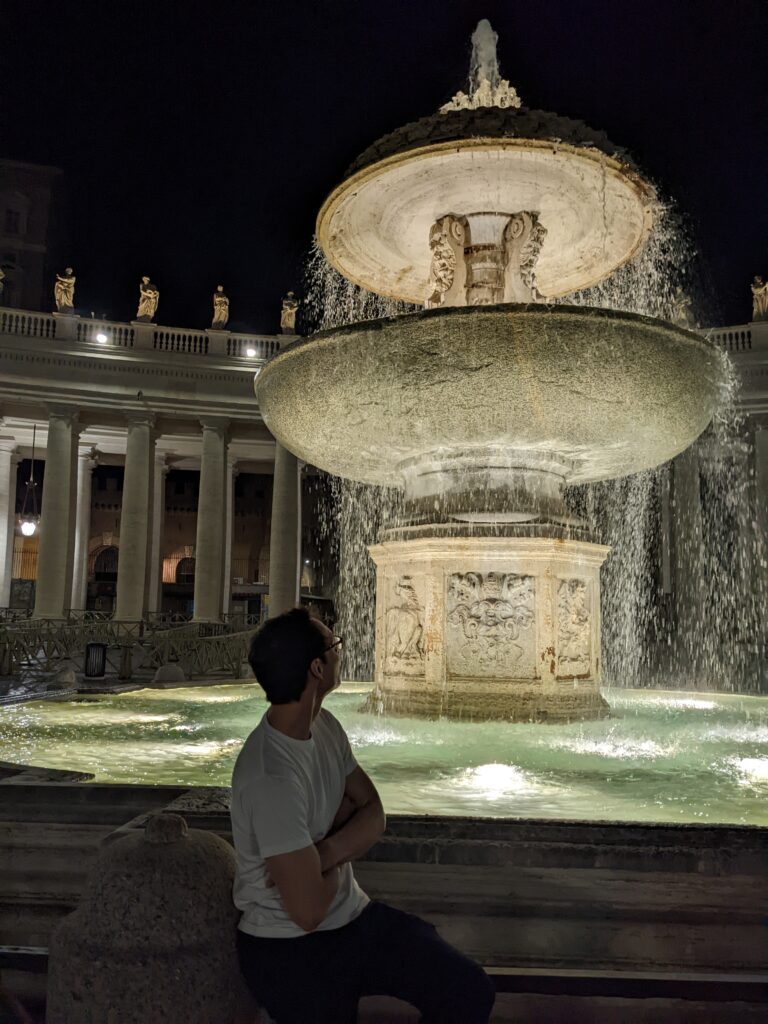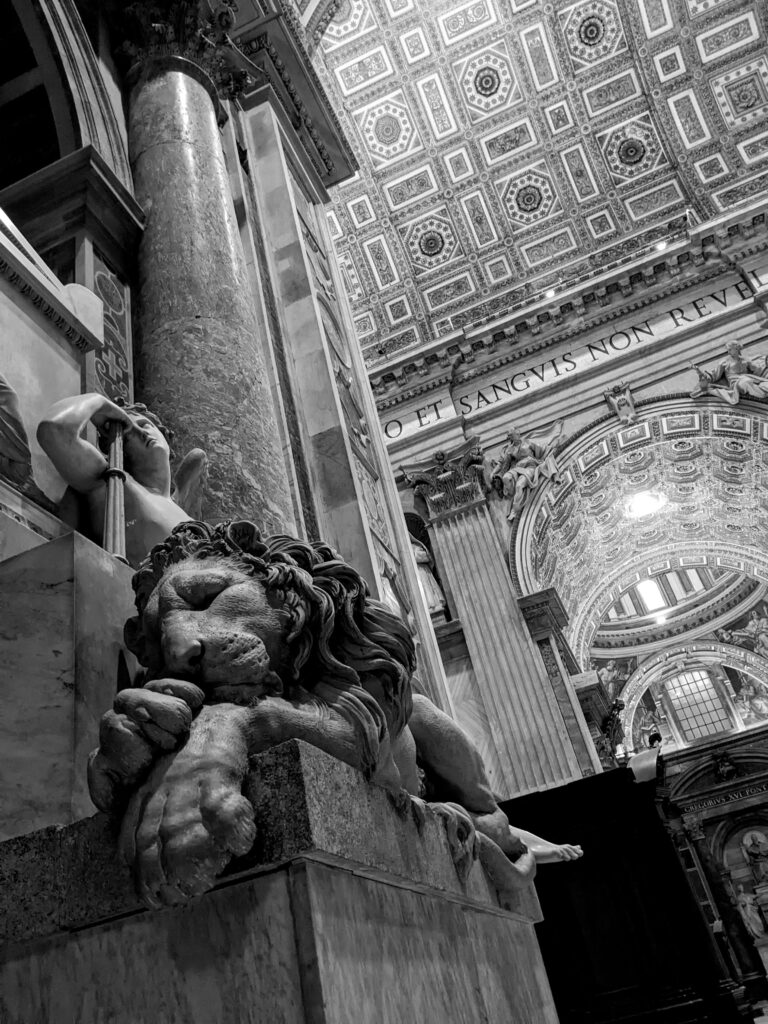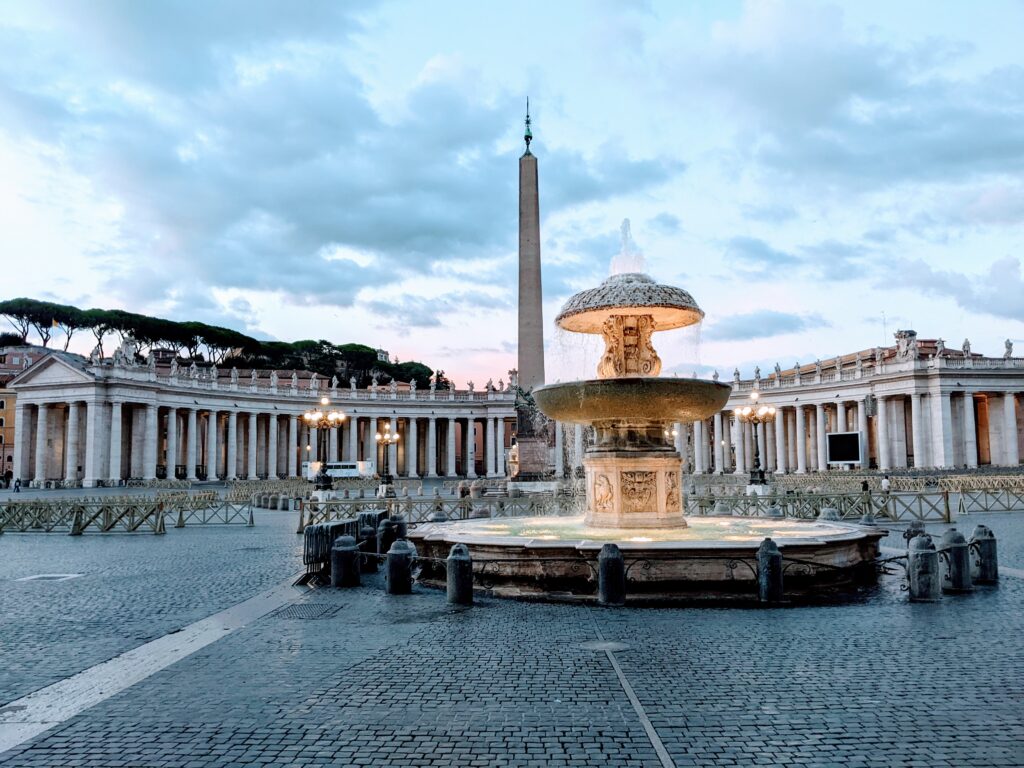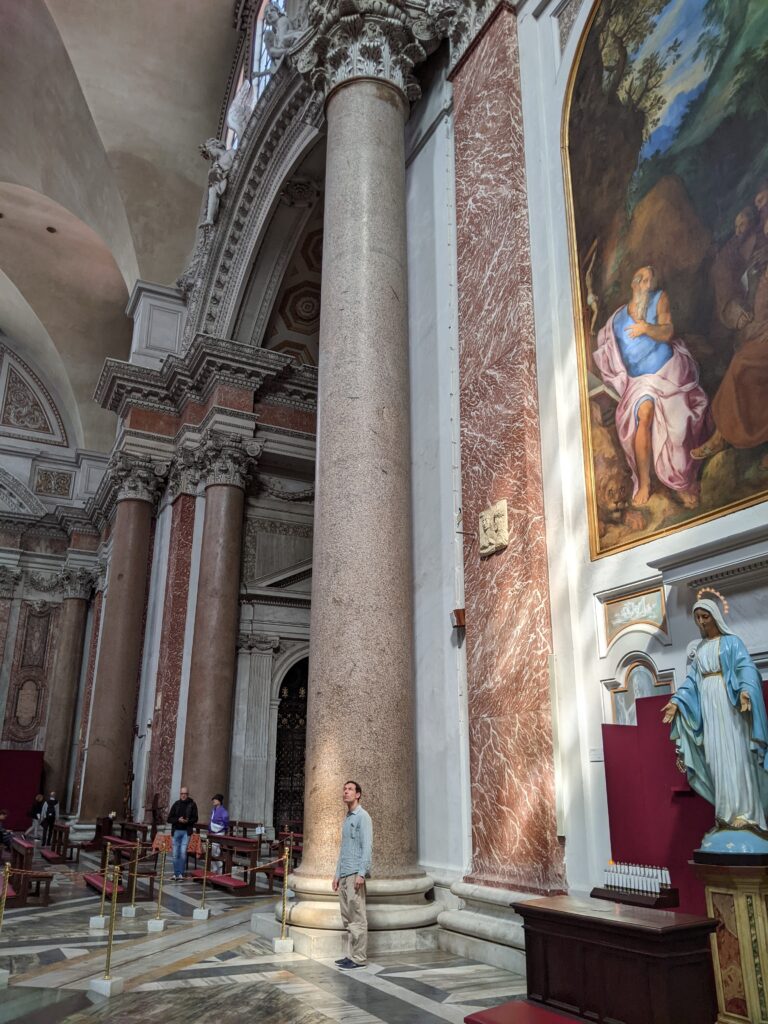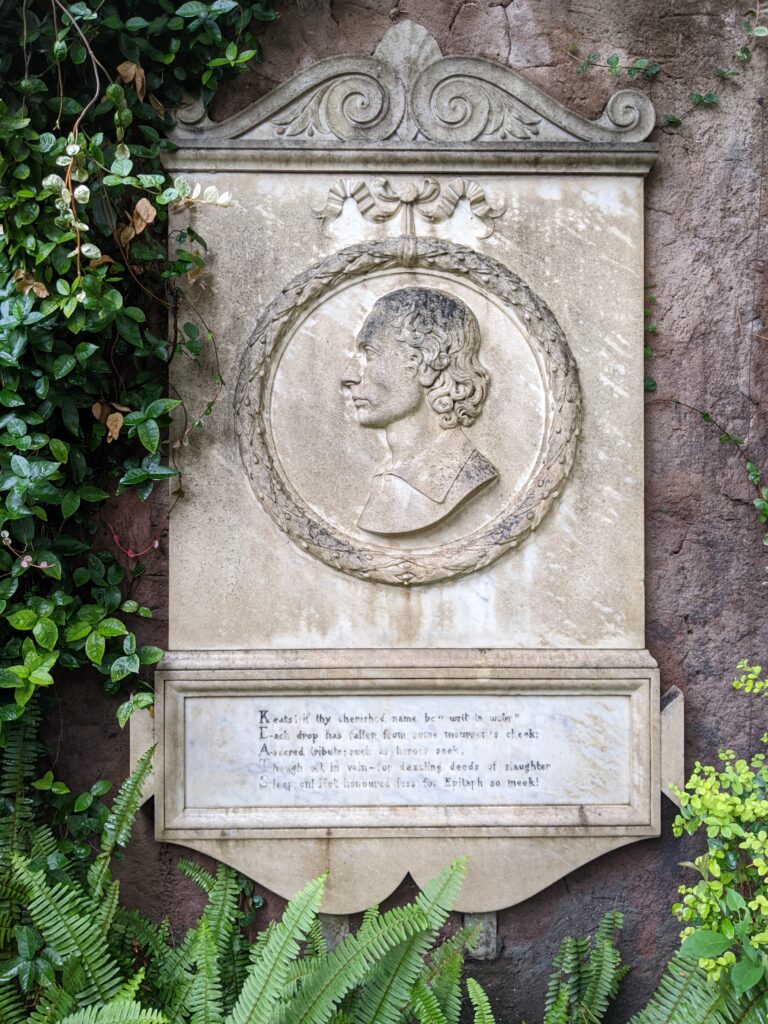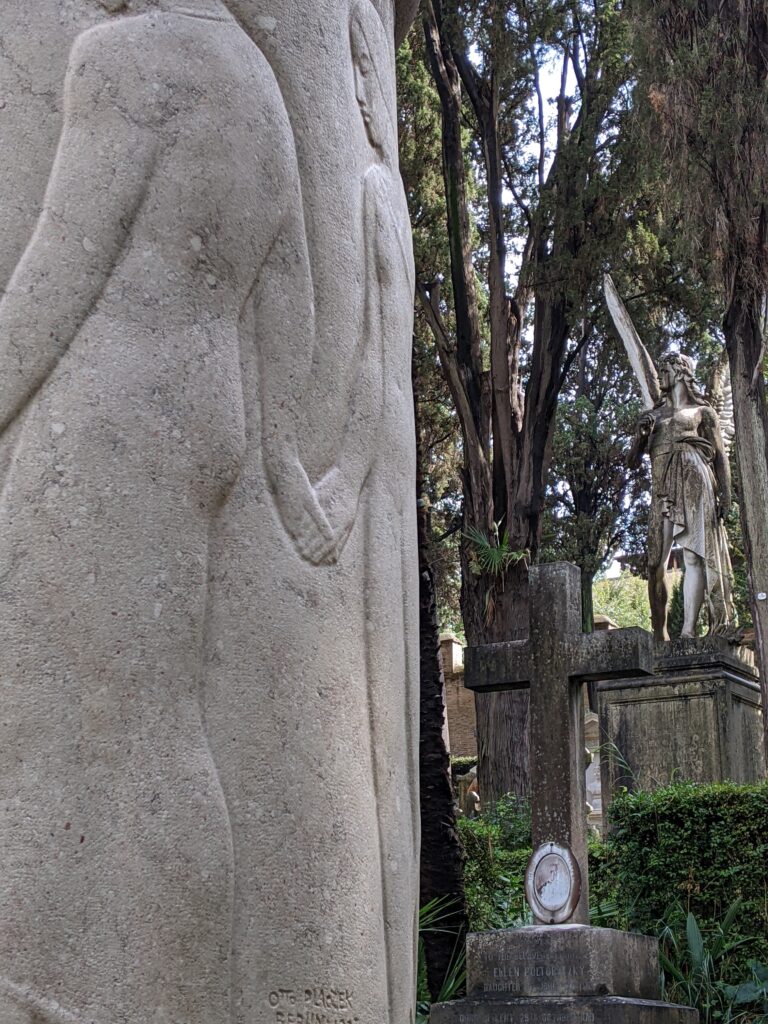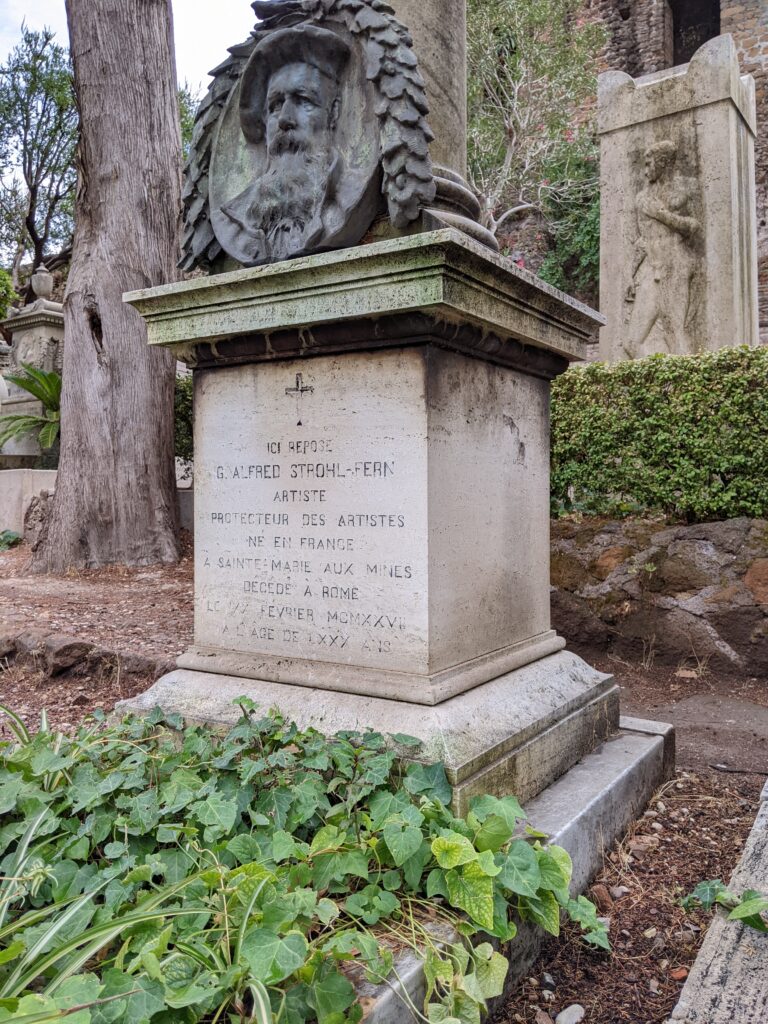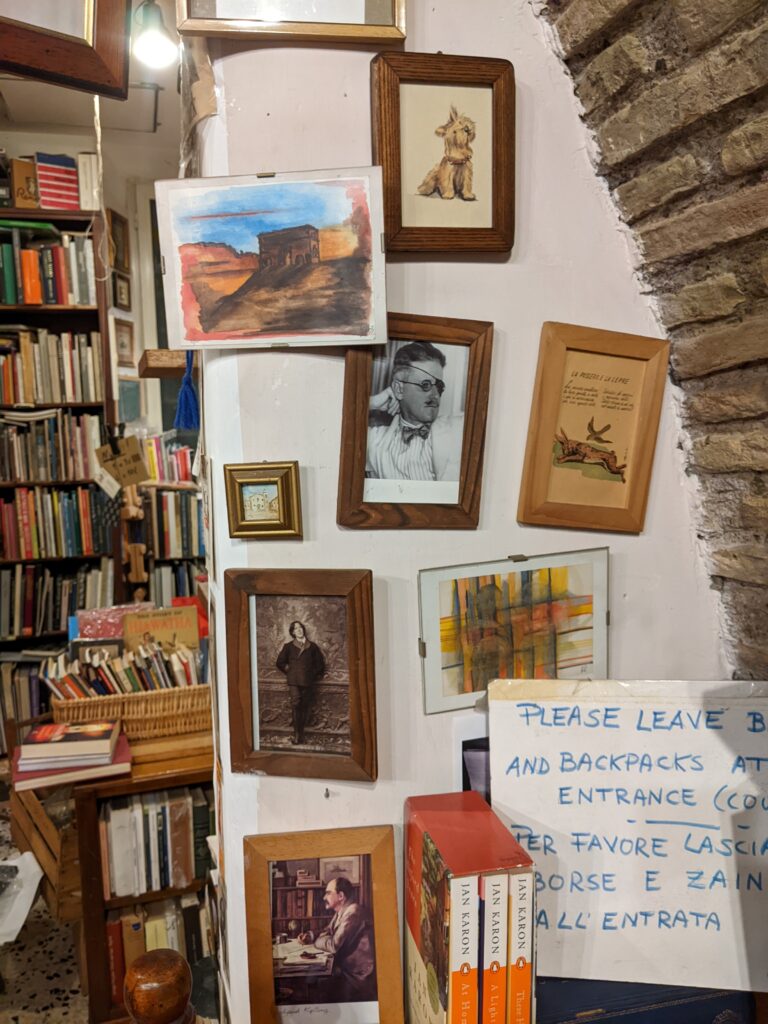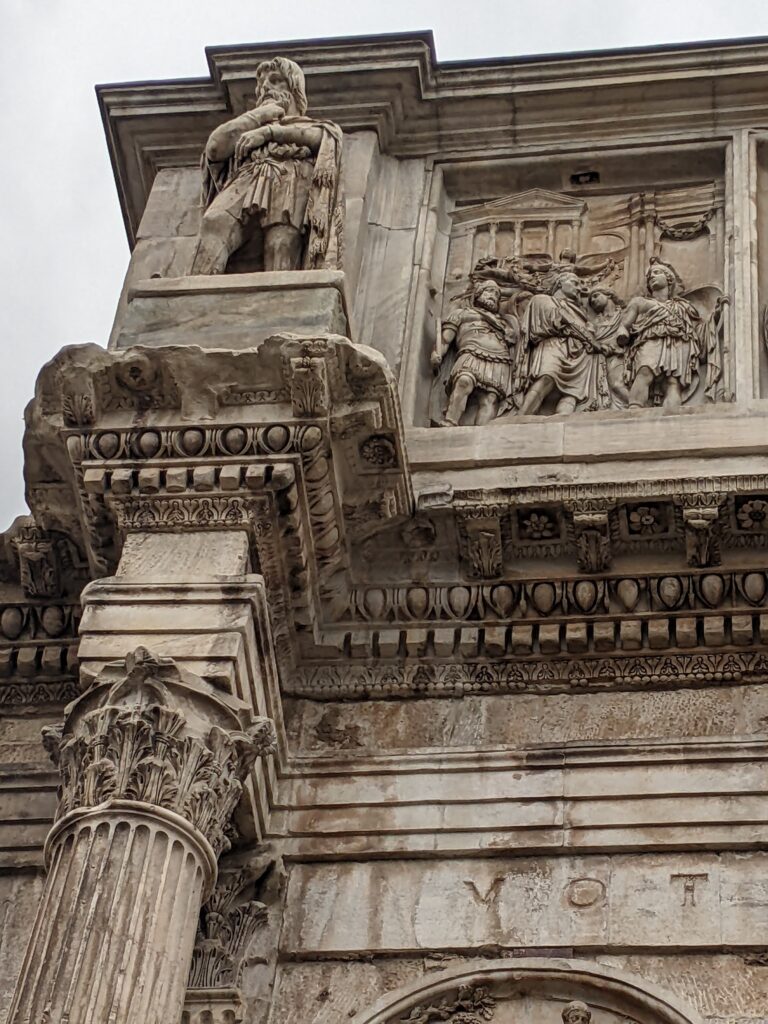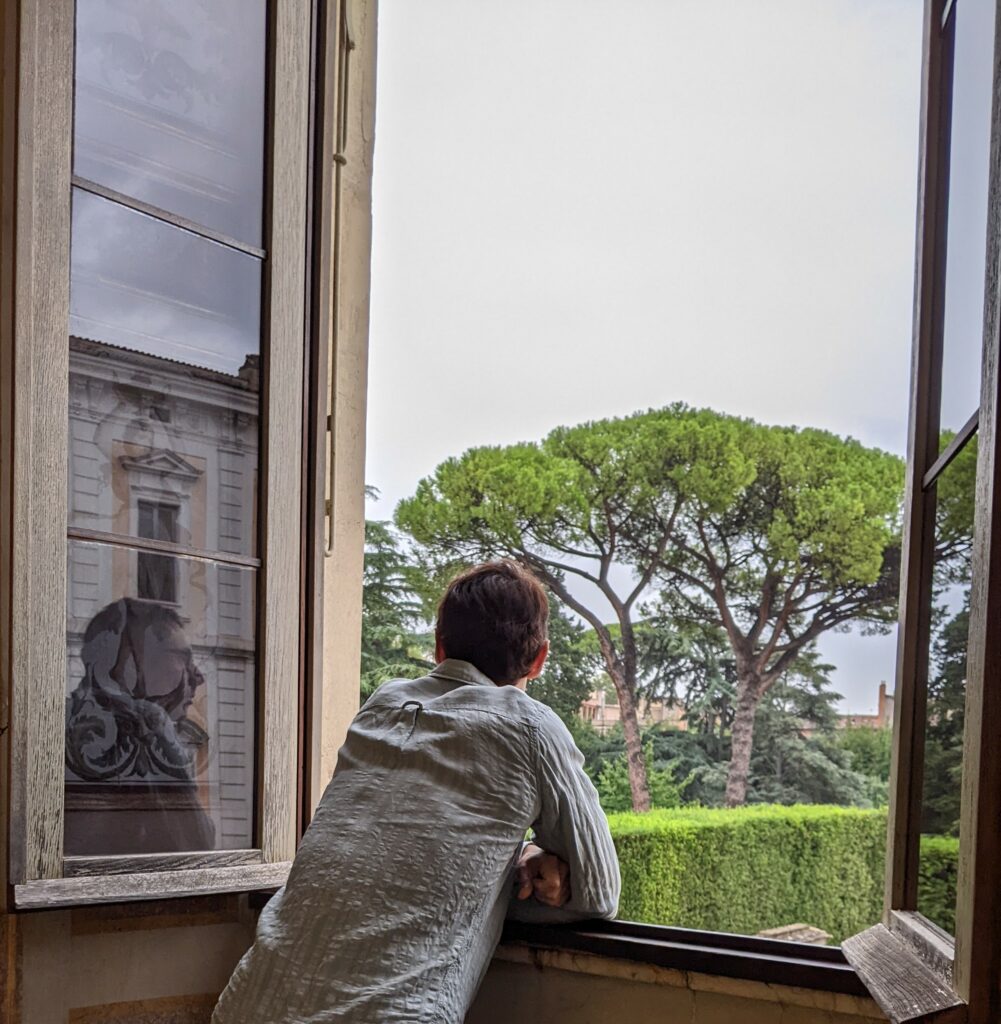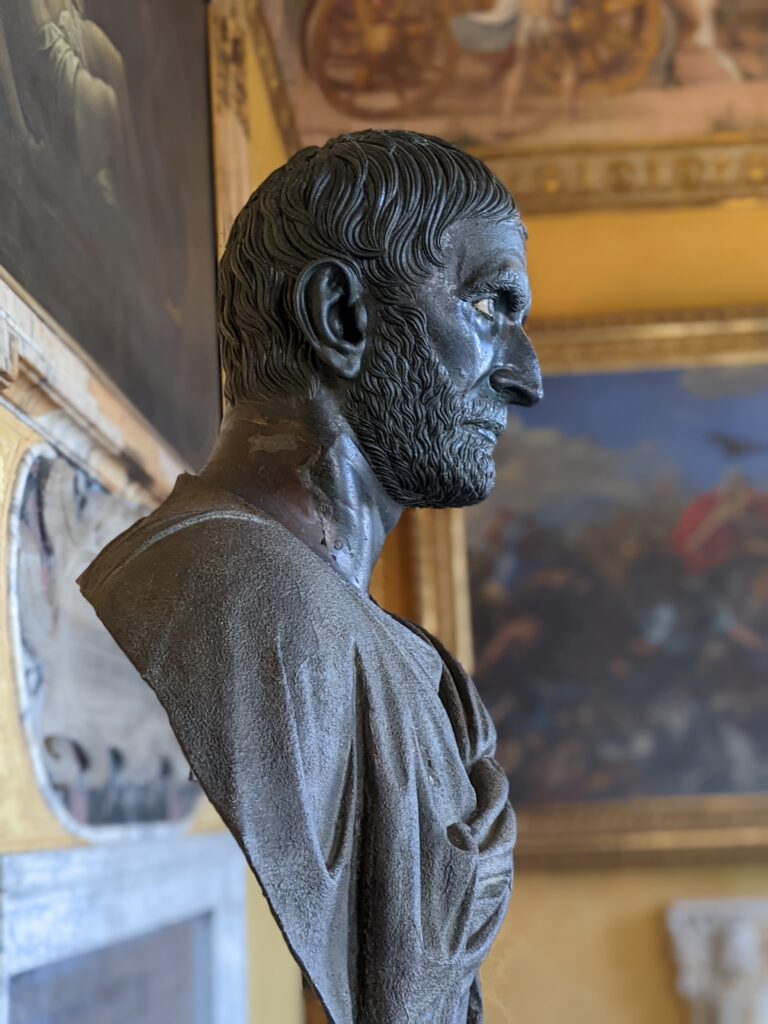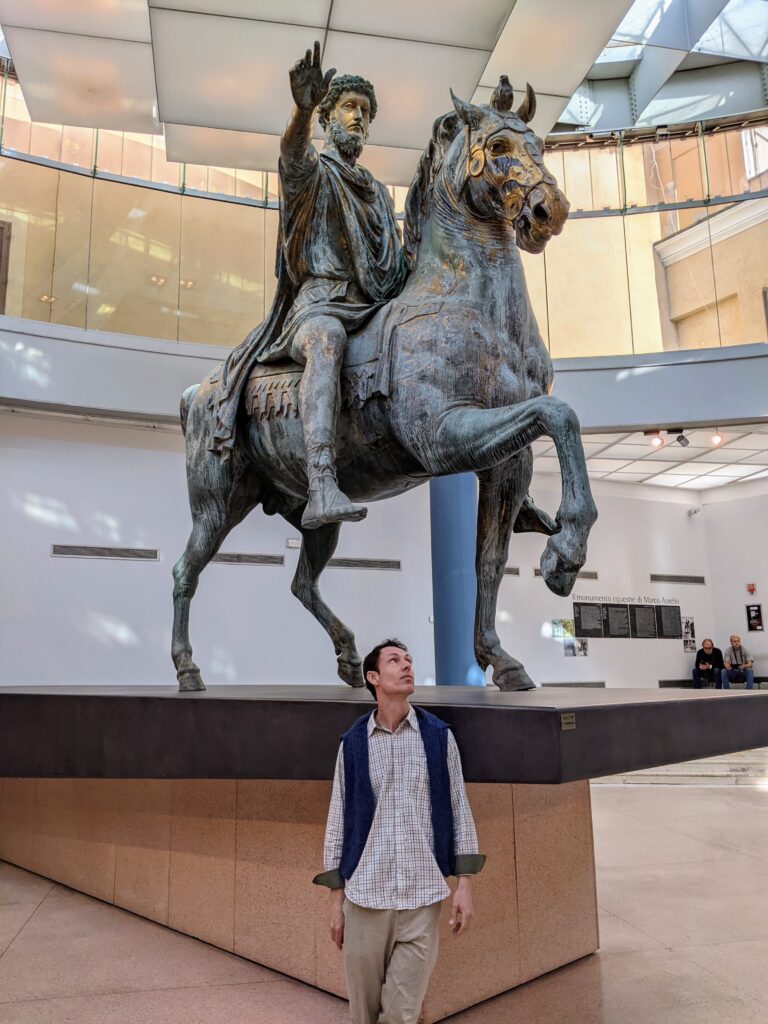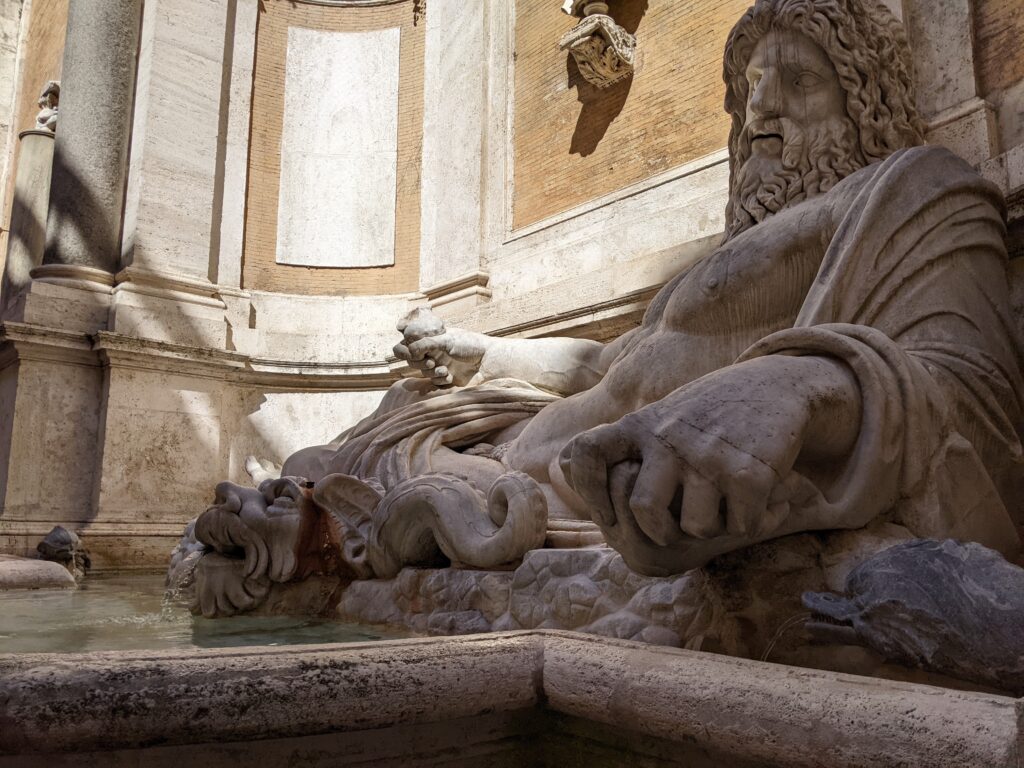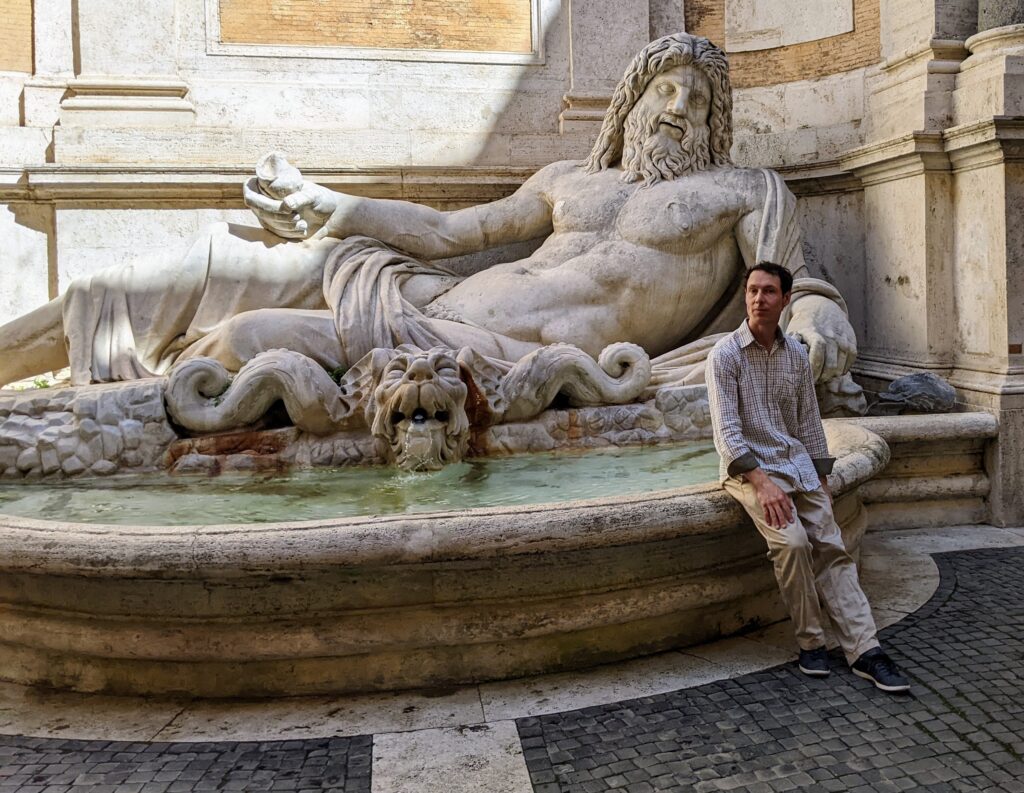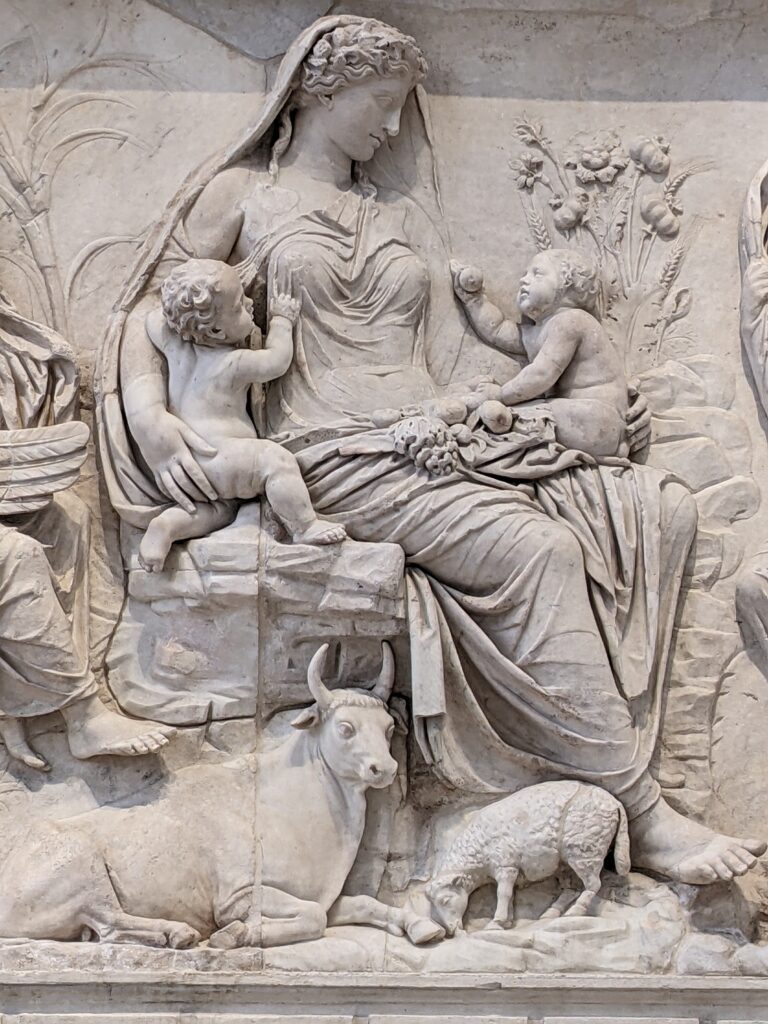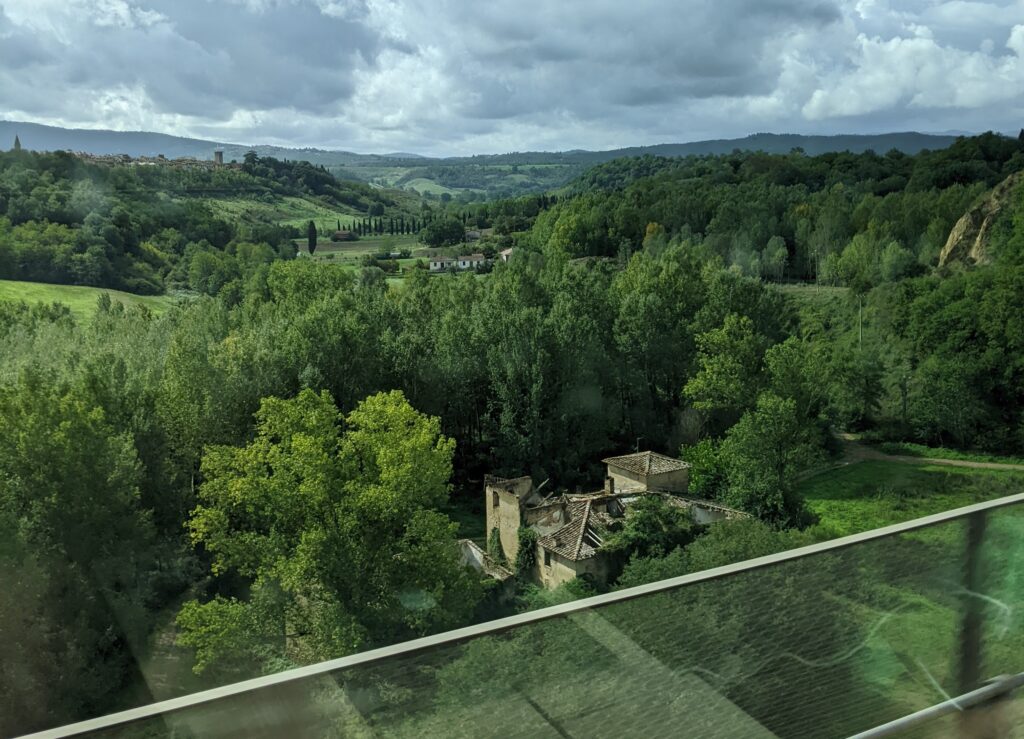
We took the high speed train from Naples to Florence. We had covered much of Italy in just 3.5 hours moving at almost 300kms an hour (at many billions of dollars expense to the Italian tax payer a few years ago). The Tuscan countryside looked so green – of anywhere this is where I would like to explore if I ever return to Italy.
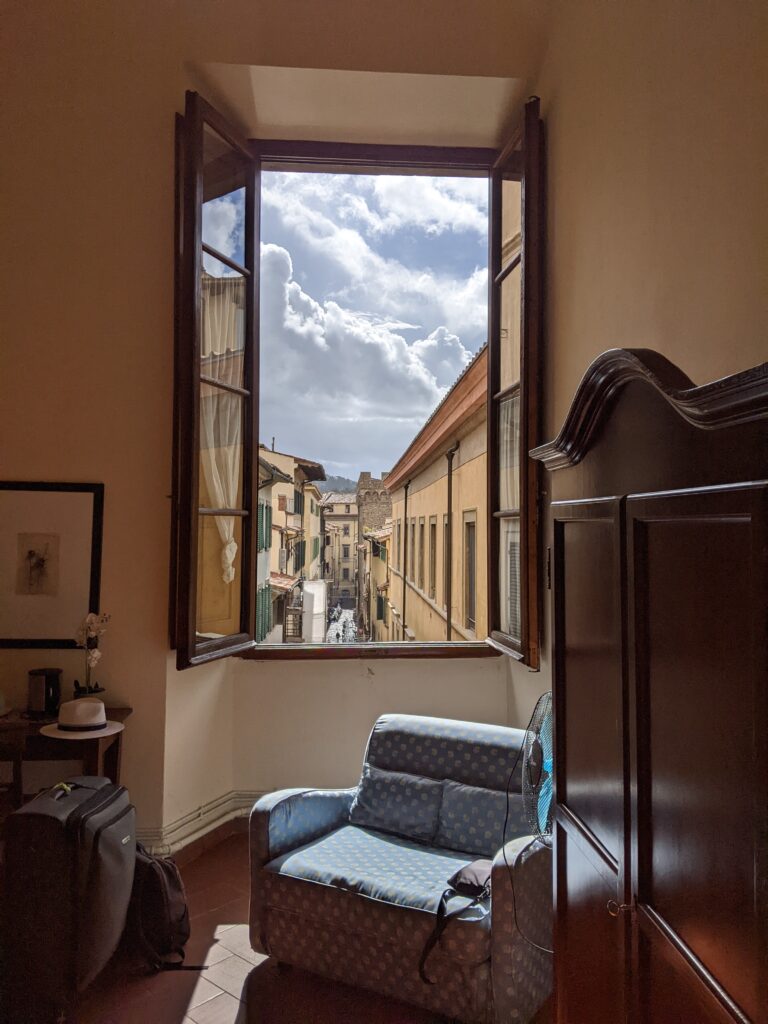
Upon arrival it turned out that we were staying on the top floor of Palazzo Ramirez-Montalvo, a late Renaissance palace, built around 1568. In the above photo you see the view from my hotel room – the noise from the street below was a bit much at 4am but the proportions of the rooms were so large it was breathtaking.
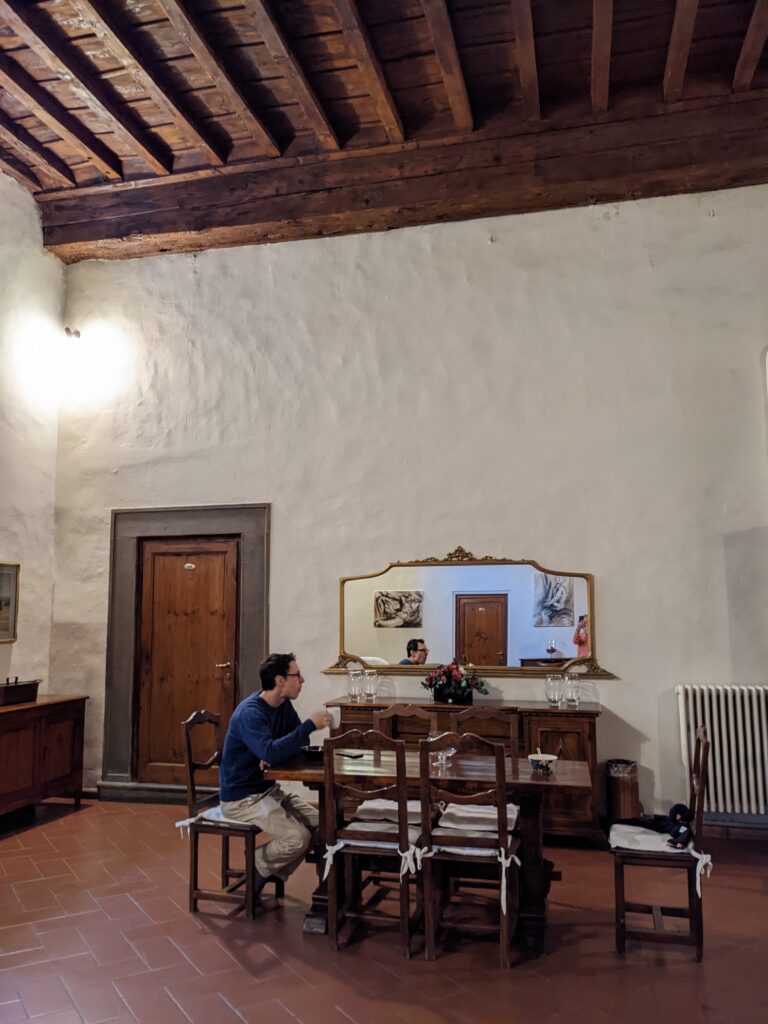
I have never eaten breakfast in such a large room as this one. (By the way the price of the room I had was about the same price as one night on Rottnest Island’s cheapest single room accomodation – Kingston Barracks – an old army barracks. So Australia, if can stay in an Italian palace in an ancient city for the price of Kingston Barracks – something may have gone awry with our national economy.)
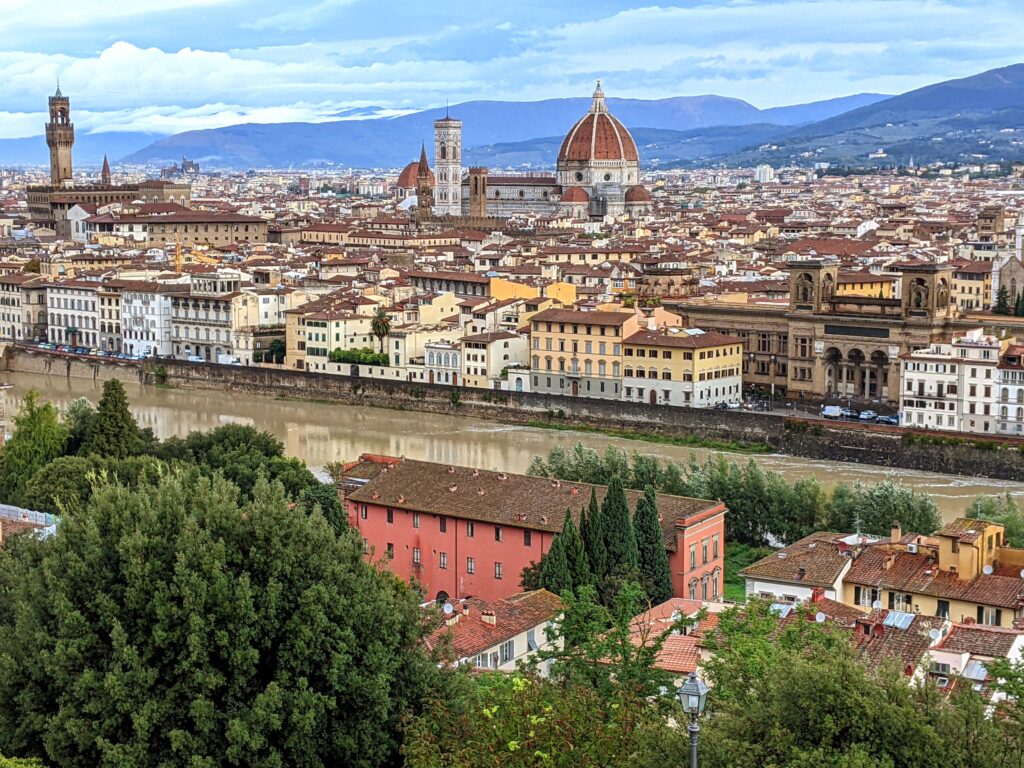
The bad news is that, of course, even in ‘shoulder season’, Florence is crowded to an unenjoyable level. You can enjoy the city however – by getting up early and having it to yourself before the crowds do, or simply by going to galleries and museums that are not that famous. The Uffizi gallery is famous, but I still went there. By going towards the end of the day I found that the last hour was tolerable.
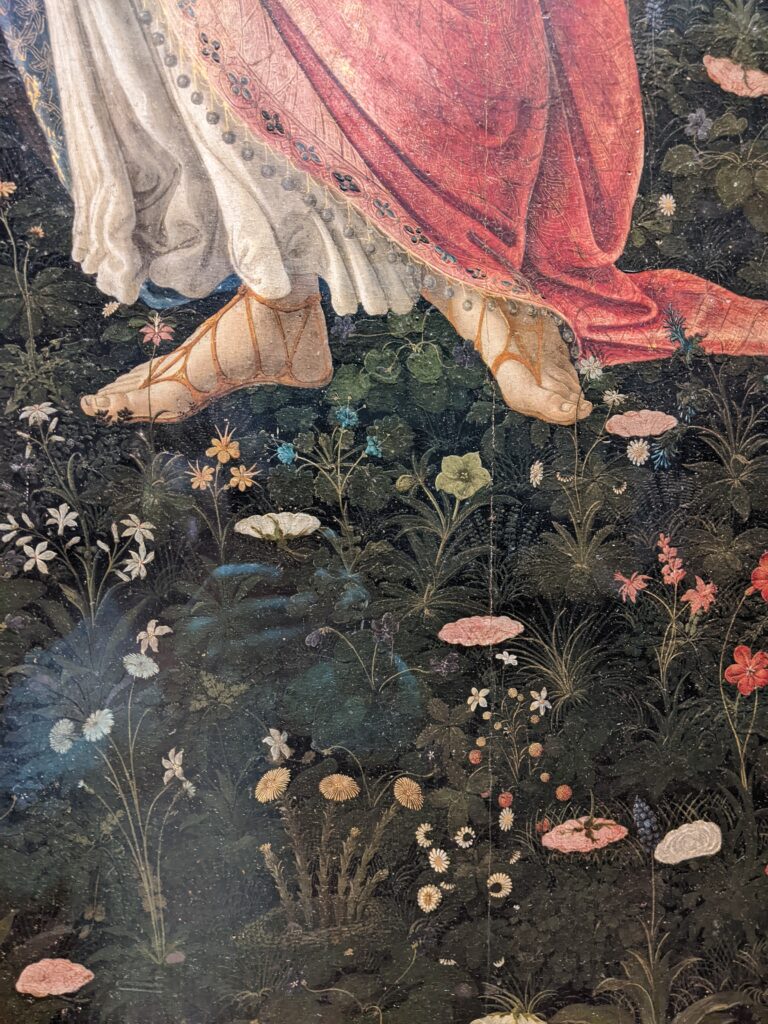
I was even able to stand in front of Botticelli’s painting Primavera with only one other person at my side (earlier it had been a football scrum, and football scrums are not very good places to contemplate beauty). The above detail of the flowers strewn under her feet caught my eye.
The upper story sculpture gallery at the Uffizi must be one of the most justly famous spaces for art to be displayed in the world. With the river Arno flowing down below outside the windows, and light flooding in, and the Tuscan countryside showing behind pink and yellow and apricot facades on the other river bank, Lorenzo Medici really got it right when he placed so many beautiful sculptures here.
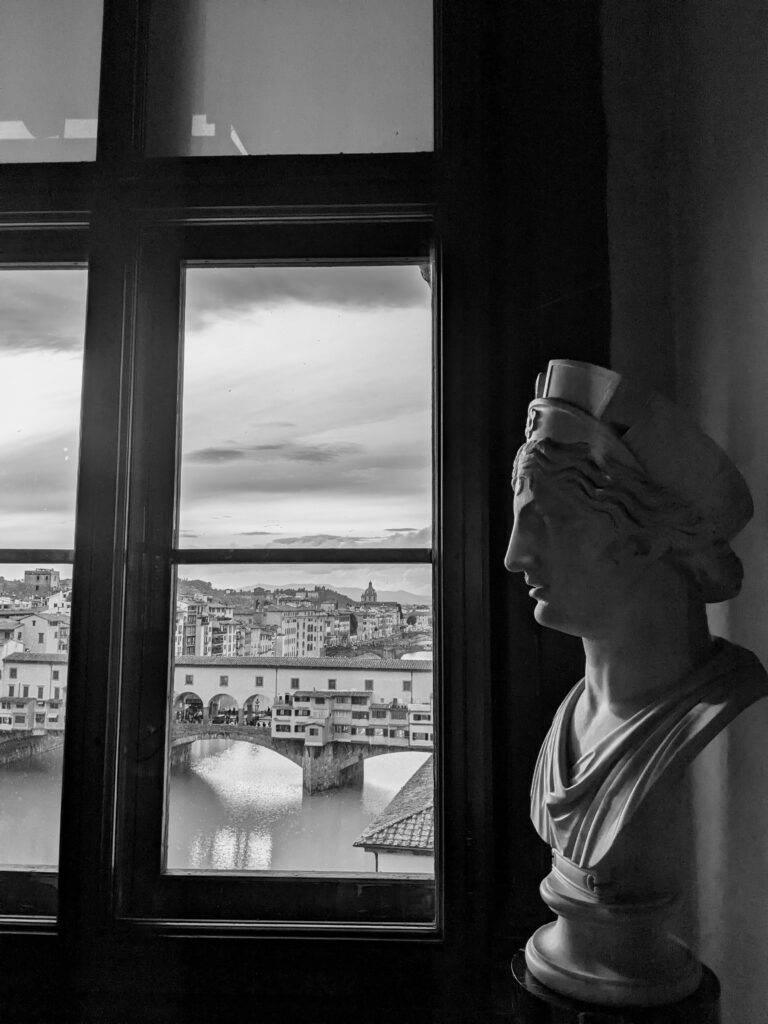
However I did have to work to avoid huge crowds here, and sometimes they were too much. It was at the Bargello that I found a place I was able to wander with quiet and peace. The below detail from some early embroidery caught my eye – traveller’s on the move.
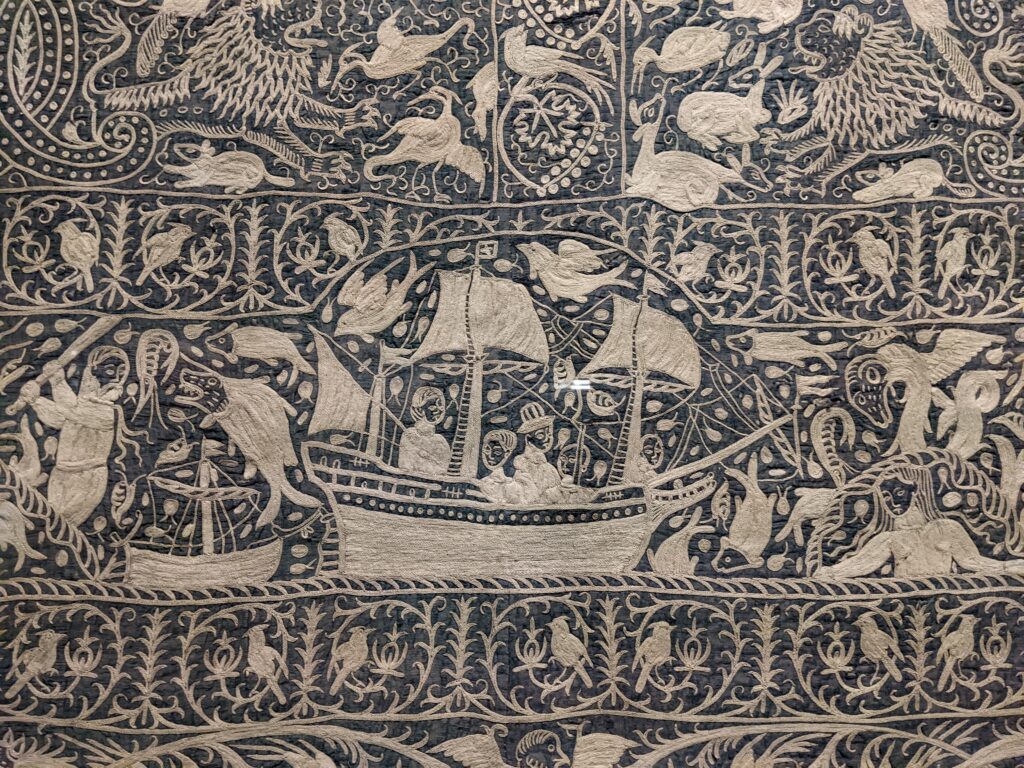
While I am pretty sure there was a football scrum over at the Accademia taking smartphone shots of the David statue, I had Donatello’s David all to myself. This is one of the most important museums in the world, and one of the most famous statues in all of art history, and I was the only person there for about twenty minutes wandering around looking at it. Made in the 1430s from bronze, this is the earliest surviving full-scale nude sculpture from the Renaissance period. Nobody here.
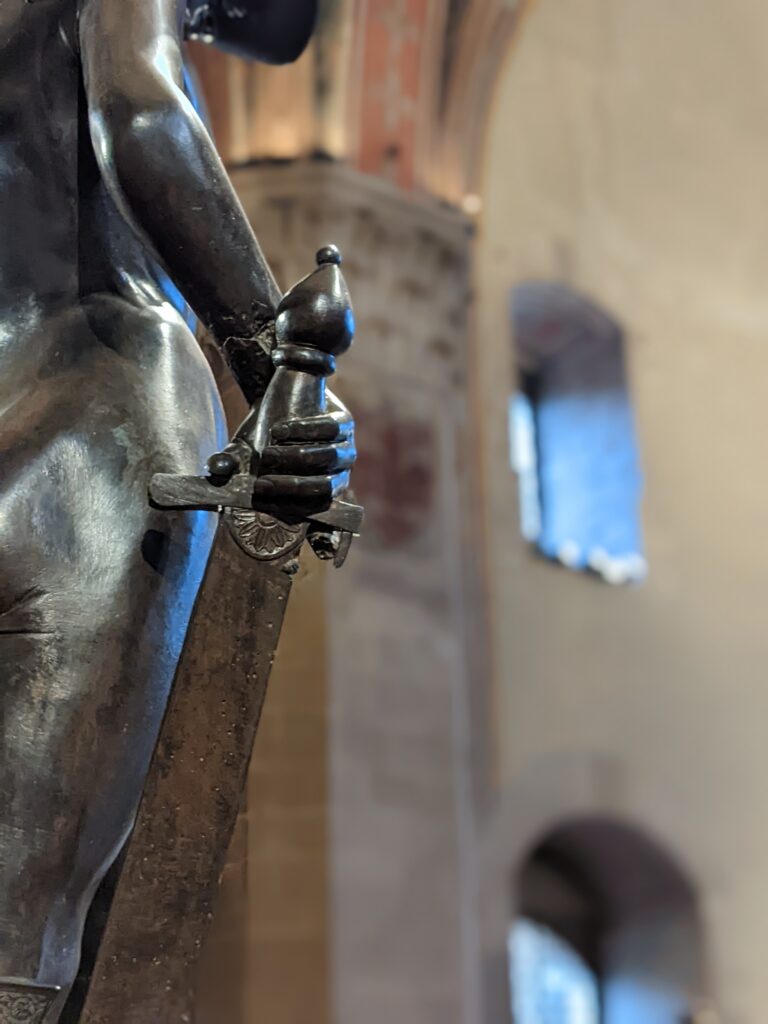
The detail of his hand holding the heavy sword caught my eye.
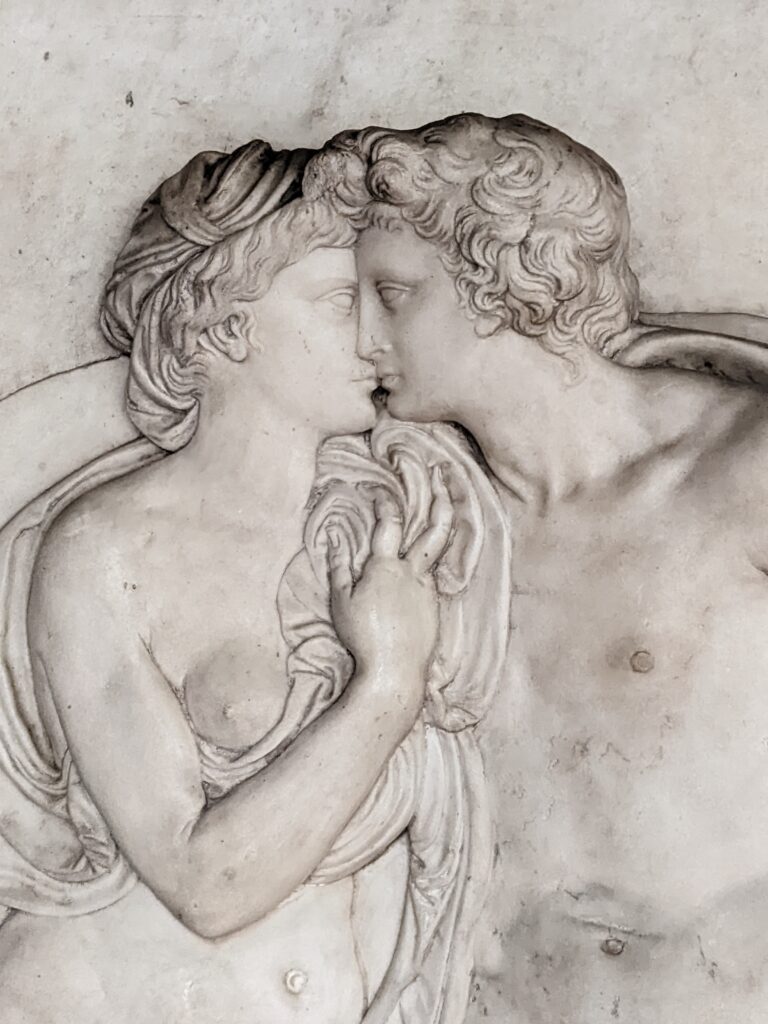
The above detail from a wall relief – again from the Renaissance – also caught my attention.
The Palazzo Vecchio is the town hall of Florence, and apart from the Duomo, the most recognisable building in the city. I went up inside it one morning, again with hardly any crowds. Once again, to avoid the worst of mass tourism, go early, and if you know even a little bit about history beyond the ‘smash hits’, you will be rewarded.
In the apartments used by the Medici dukes at the top of the building this view out a window struck me.
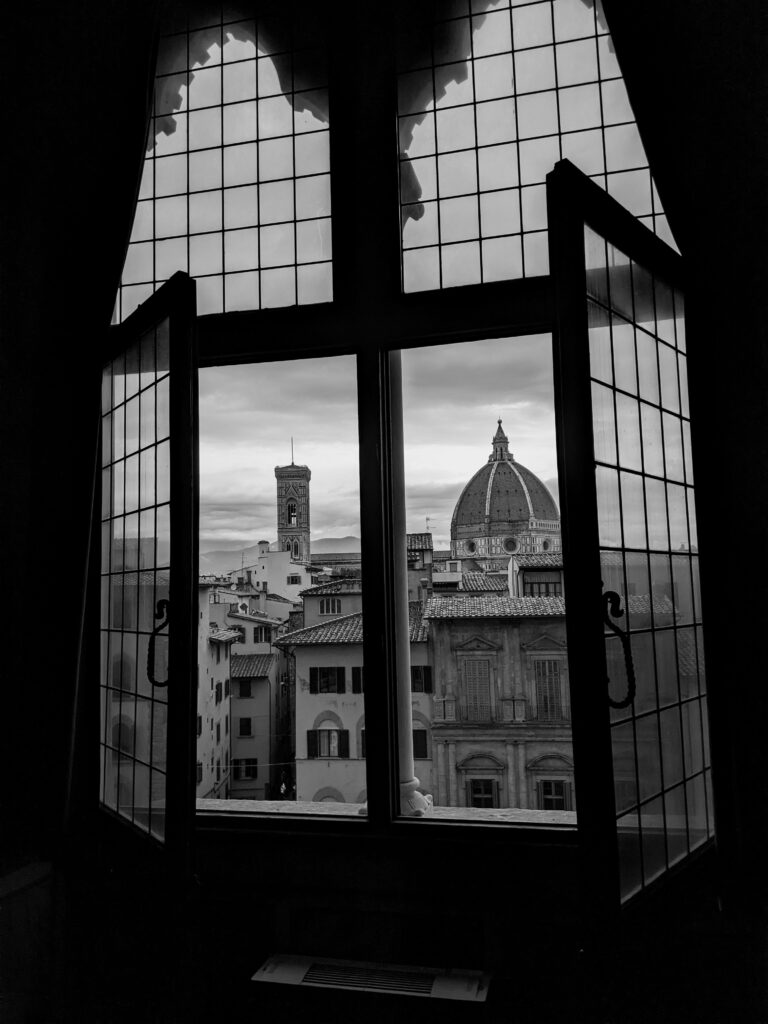
There are many museums and churches in this city, and they almost all require payment to enter. One of the things I was happy to pay for was entry to the Medici chapel. I did indeed have an intake of breath when I saw the domed green marble room that is the Cappella dei Principi upon first entering, but it was when I got into the Sagrestia Nuova, or the Sacristy, that I was able to admire the beautiful marble sculptures by Michelangelo, from 1526–1531.
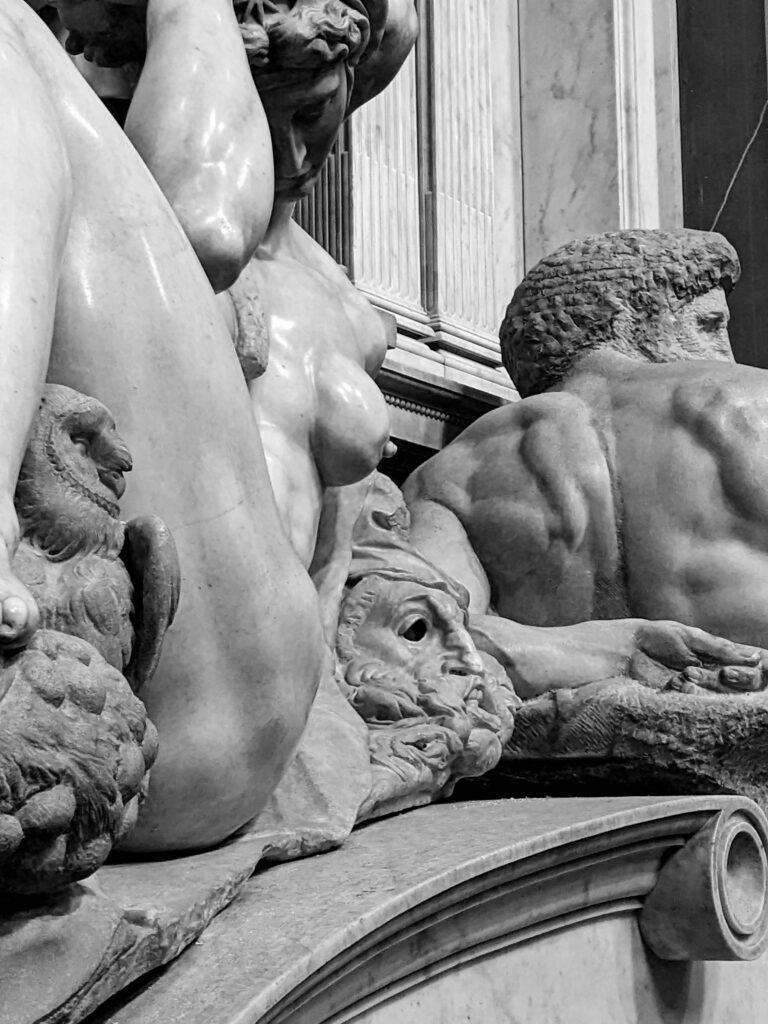
I was there to look at the figures of the two Medici dukes above – tomb monuments – but it was actually the representations of Night and Day – this man and woman above, that I found memorable to look at. Like all of these photos I will show you of sculpture, you can’t get it by looking at the 2D image. You need to walk around a sculpture, and even a video can’t allow you to do that. Only in person travel can allow you to experience so much of art history.
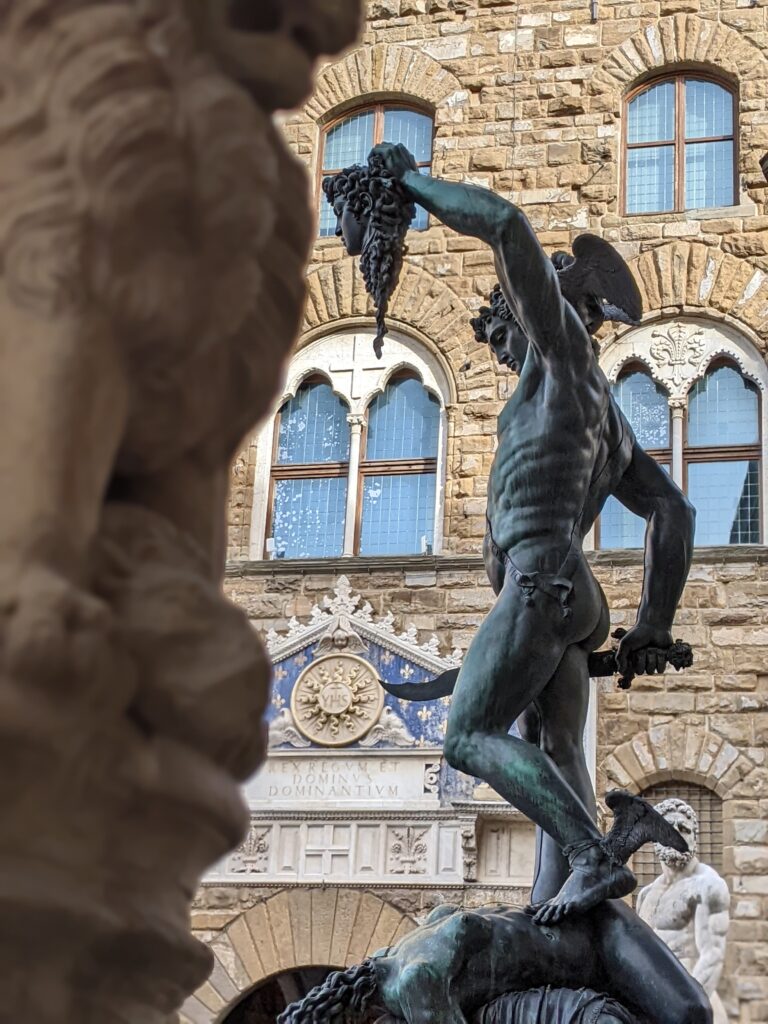
Florence is overcrowded. However if you are interested in European history it is a place that you should have understanding of. And if you go to the Piazza della Signoria and raise your eyes to the sky, as in the above and below photos, it is still memorable.
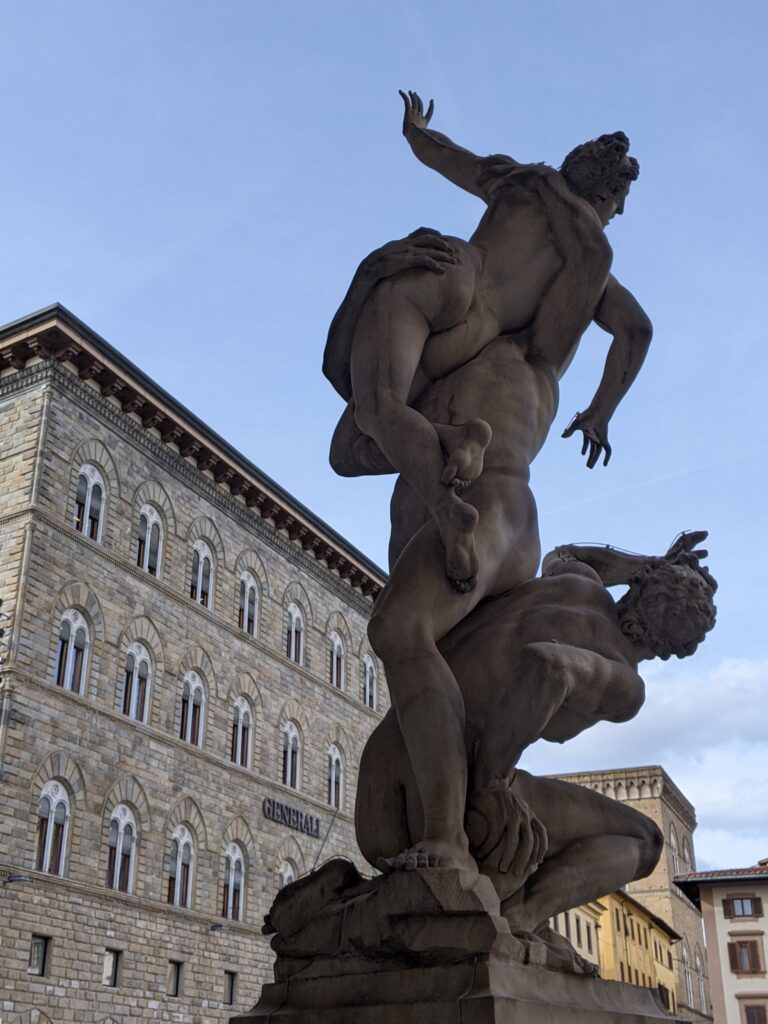
In case you think I don’t care about the pleasures of the table, here is a shot from the Mercato Centrale. Once again Australia – look at the price!
